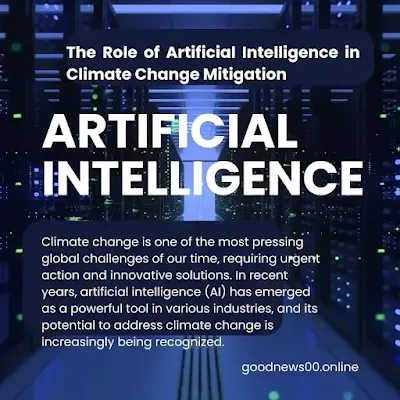The Role of Artificial Intelligence in Climate Change Mitigation
Climate change is one of the most pressing global challenges of our time, requiring urgent action and innovative solutions. In recent years, artificial intelligence (AI) has emerged as a powerful tool in various industries, and its potential to address climate change is increasingly being recognized. This article explores the role of AI in climate change mitigation, highlighting its applications across sectors and the transformative impact it can have on achieving environmental sustainability.
1. AI in Energy Management and Efficiency
One of the key areas where AI is making a significant impact on climate change mitigation is energy management and efficiency. AI algorithms can analyze vast amounts of data from sensors and smart meters to optimize energy consumption, reduce waste, and enhance renewable energy integration. By learning patterns and making accurate predictions, AI systems can dynamically adjust energy supply and demand, leading to substantial energy savings and greenhouse gas emissions reduction.
2. Enhancing Climate Modeling and Prediction
AI is revolutionizing climate modeling and prediction capabilities, enabling more accurate forecasts of extreme weather events, sea-level rise, and other climate-related phenomena. By analyzing historical data and real-time observations, AI algorithms can identify patterns and correlations that help scientists make more informed predictions about future climate scenarios. This information is crucial for policymakers, enabling them to develop effective adaptation strategies and allocate resources efficiently.
3. AI-Driven Precision Agriculture
Agriculture is a significant contributor to greenhouse gas emissions and deforestation. However, AI-powered precision agriculture techniques offer a promising solution. By combining data from satellites, drones, and ground sensors with AI algorithms, farmers can optimize water usage, minimize pesticide and fertilizer application, and increase crop yields. This not only reduces the environmental impact of farming but also ensures food security in the face of changing climate conditions.
4. Intelligent Transportation Systems
Transportation is a major source of greenhouse gas emissions. AI can play a vital role in transforming transportation systems, making them more efficient and sustainable. AI algorithms can optimize traffic flow, reduce congestion, and improve public transportation services. Additionally, AI-powered autonomous vehicles have the potential to significantly reduce fuel consumption and emissions. By integrating AI into transportation infrastructure, we can move towards a greener and more connected future.
5. AI-Assisted Climate Change Adaptation
Adapting to the impacts of climate change is crucial for building resilience in vulnerable communities. AI technologies can assist in identifying areas at high risk of natural disasters, such as floods and wildfires, and help plan evacuation routes or allocate resources for response and recovery efforts. Furthermore, AI-powered early warning systems can provide timely alerts and enable proactive measures to mitigate the impact of extreme weather events, saving lives and reducing property damage.
Game-changer in the fight against climate change
Artificial intelligence is proving to be a game-changer in the fight against climate change. Its applications across various sectors, including energy management, climate modeling, agriculture, transportation, and adaptation, are revolutionizing how we approach environmental sustainability. By harnessing the power of AI, we can make more informed decisions, optimize resource utilization, and develop effective strategies to mitigate climate change. As AI continues to evolve, it is crucial to ensure ethical implementation and address potential challenges to maximize its positive impact on our planet's future.


Comments
Post a Comment